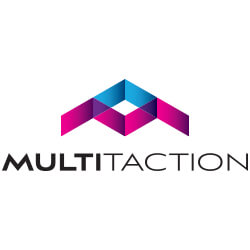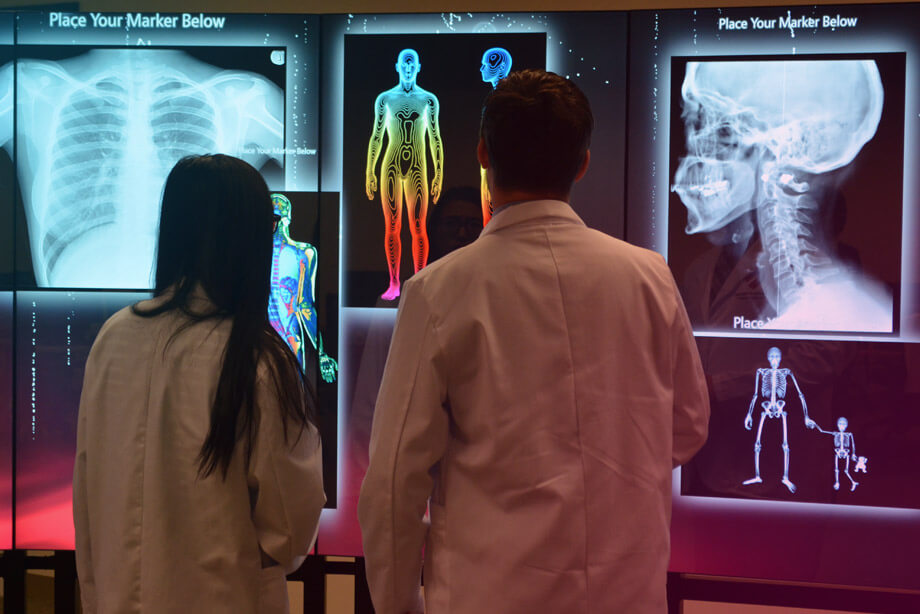
MultiTaction CEO, Pete Malcolm, recently sat down with AV Magazine to discuss the future of visual collaboration, and the exciting solutions that MultiTaction has to offer the Higher Education market.
Collaboration like you’ve never seen before. MultiTaction’s Pete Malcolm tells Lindsey Reynolds about the company’s scalable iWall technology – including the world’s biggest interactive surface

Giant curved interactive touch walls, displaying real-time information from multiple sources and generated by multiple users – simultaneously. And when you put lots of walls into different places – anywhere in the world – it is still displayed in real time, on all screens. That’s what MultiTaction delivers, according to the company’s CEO, Pete Malcolm. MultiTaction systems are being used in several vertical markets, but in many ways higher education is its natural home, Malcolm explains, since the core of MultiTaction technology was developed at the University of Helsinki, Finland, by the company’s founder.
Core proposition
At the core of the MultiTaction proposition are its MT cell (a 55in Ultra HD interactive flat panel), a range of software applications and a number of patents. The cell detects the touch of any object, or combination of objects, at any one time – fingers, hands, pens or a card – and with the addition of a 2D code, specified actions can be triggered. We register touch optically, with cameras behind the glass, and can detect unlimited touch points from any object, says Malcolm. So while one person annotates a video, another zooms into an image with their hands while someone else writes on the wall with a pen. MT cells stack into any size of videowall – the iWall. Malcolm says there’s no limit to the number. The largest to date includes 55 MT cells. Kids played the cult game Candy Crush on the massive wall for a US TV show, using harnesses to reach the entire interactive surface – it is the world’s biggest and scooped a Guinness World Record for MultiTaction. The iWall can also be curved. Indeed, it needs to be curved if what’s displayed is to be seen clearly by everyone in a large space, such as a lecture theatre, Malcolm explains. The curved iWalls are typically six to 12 panels, but for a big space you might have 22 to ensure everyone can see.
The addition of MT Canvus software enables any number of users in one space to collaborate on the iWall, interacting with live data from multiple sources. Content can be pulled from a central server or from a remote PC, laptop, tablet or smart device – any PC-based equipment or specialist applications can be opened using MT Canvus. Academic staff can prepare lessons, displaying content in any of a set of pre-configured canvases, or use page markers to navigate content in a planned sequence.
MT Canvus Connect takes that concept global, enabling iWalls in different locations to display the exact same data at the exact same time. It’s real-time and completely synchronous, says Malcolm. When someone writes on the iWall in one location, it appears at the exact time on the other side of the world. “It doesn’t take massive amounts of bandwidth either, because we’re not sending all the data, we’re sending only the touch locations,” he adds. “We can also export to other devices – a projector, for instance, or to a webcast – so students can view what’s happening on the iWall on a website or even their own personal device. The other end can output specific areas of the display – all controlled by the lecturer

HE applications
MultiTaction technology is already used in more than 50 universities around the world, including the US Universities of Columbia and Toledo, at MIT and Wellesley College, and at the Queensland University of Technology in Australia and Technische Universität Dresden in Europe. It gives universities true, real-time collaboration on a new scale for both education and research, where the ability to view, evaluate, manipulate and share information live via the walls has intriguing possibilities. The University of Nebraska has a curved iWall running MT Canvus in its Medical Centre (UNMC) enabling students to learn and explore in an immersive environment and visualise and interact with data in new ways. MultiTaction technology, including MT Canvus Connect, will also be installed in UNMC’s new state-of-the-art building, due to open in 2018, which will house the Interprofessional Experiential Center for Enduring Learning (iEXCEL). The centre will transform healthcare education in the same way flight simulation revolutionised aviation. Students will use advanced visualisation and simulation technology to learn and practise before encountering real patients.
A second iWall in the Scottsbluff satellite campus will allow students to collaborate in real time with students at iEXCEL. MultiTaction’s technology is not restricted to medical applications. Universities can utilise the systems to enhance their prestige, enhance fundraising and excite millennials with the latest technologies to assist student recruitment.

Social platform
In a lobby or common room space it can be a social platform. The MultiTaction touch table in the Admissions Office Welcome Center at Trinity University, for example, enables prospective students to explore courses and facilities with a range of preprinted cards with a code that activates content when placed on the table. The University of Illinois uses it to research touch technology’s influence on group interactions and learning in the school classroom, while at University of Oregon’s Ford Alumni Center in Eugene it serves as a contact and messaging tool, connecting current and past students of the university. In the classroom it provides an enriched curriculum and in the lecture theatre an engaging presentation system. Indeed, the technology has endless exciting possibilities, says Malcolm, to engage and inspire

Leave a Reply